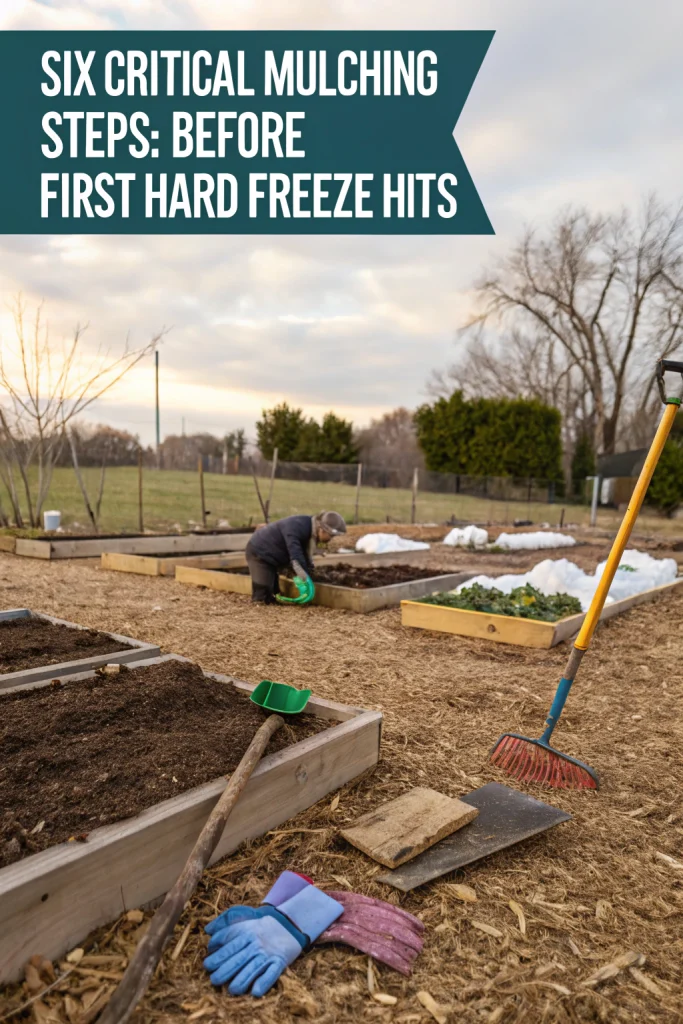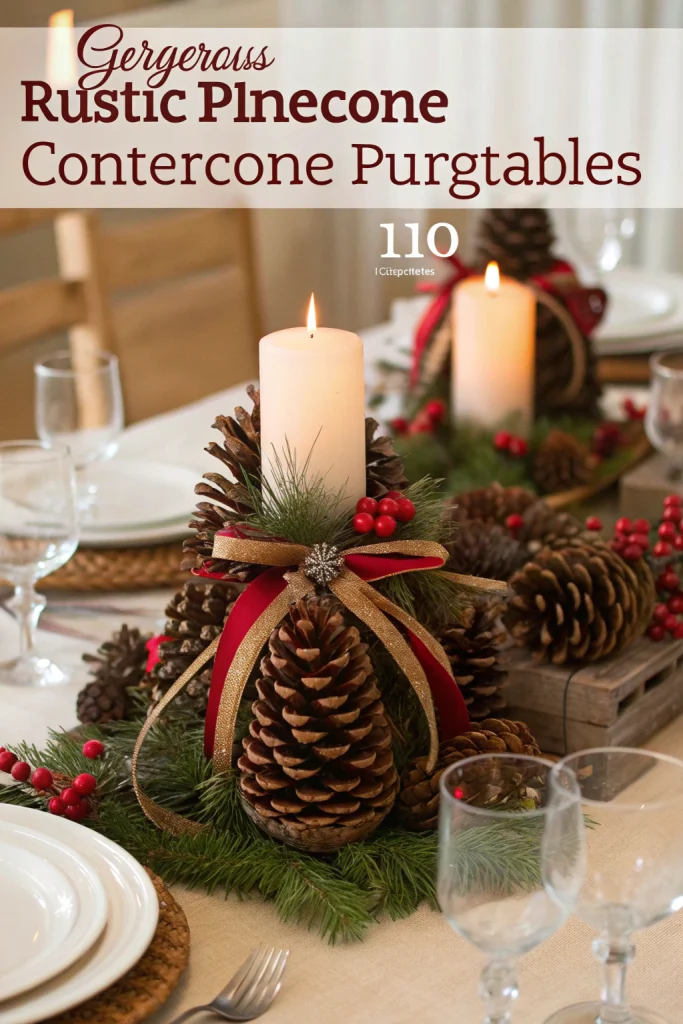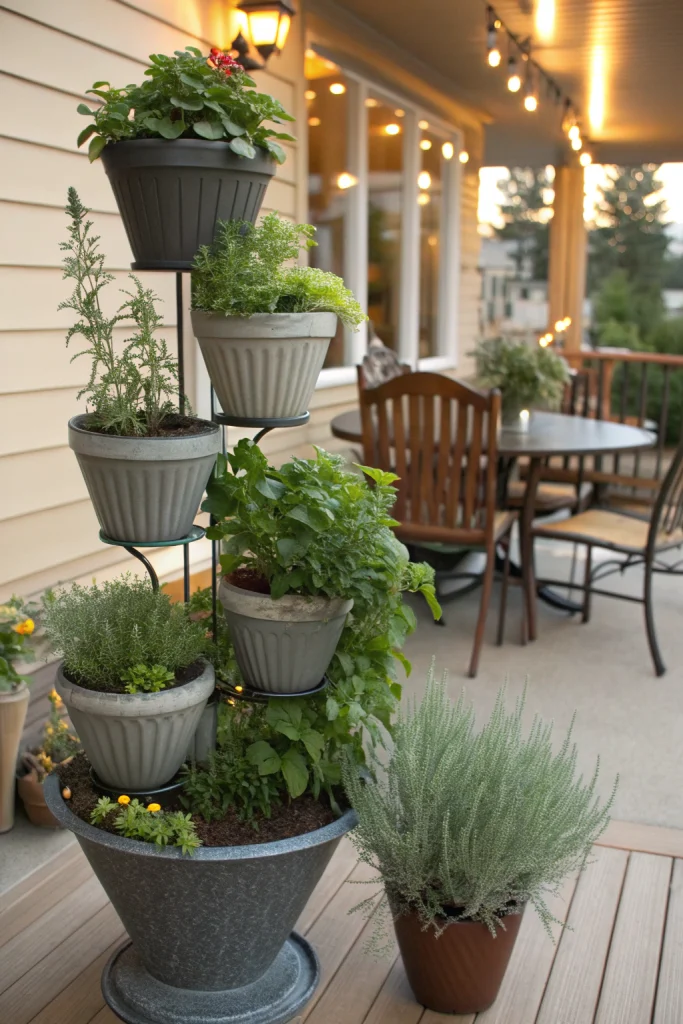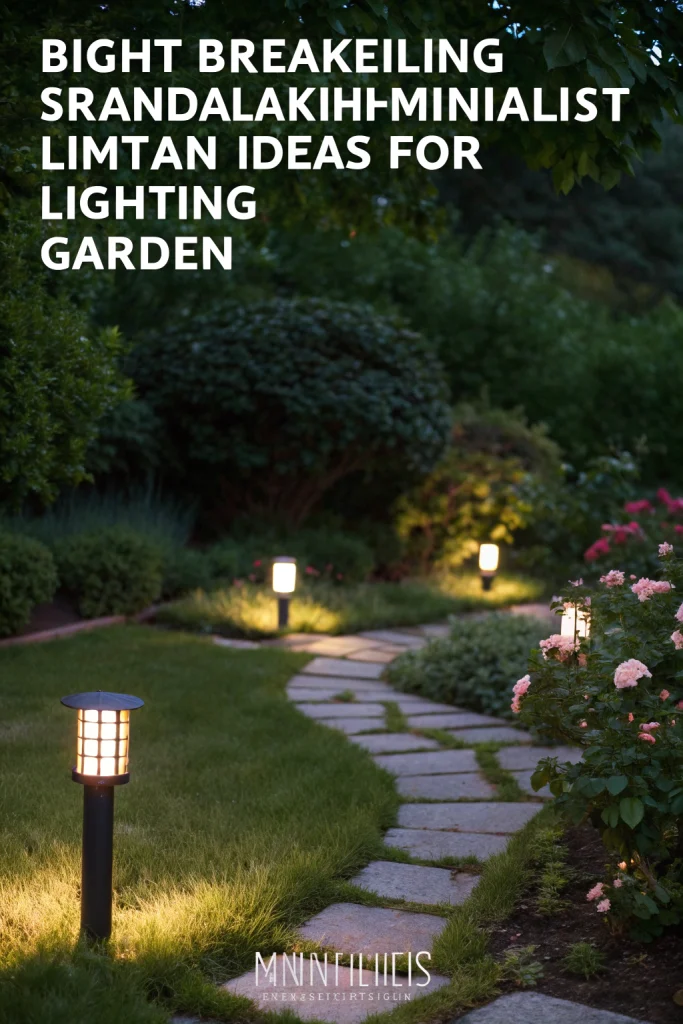The focus keyword for this article is: Last-Chance, Mulching, Before, Hard
The tone should be: Practical, informative, encouraging
The audience is: Eco-conscious gardeners, beginners to intermediate, looking for sustainable, cost-effective methods.
Table of Contents
ToggleLast-Chance, Mulching, Before, Hard — Sustainable Gardening for Resilient Results This Season
Last-Chance, Mulching, Before, Hard blends practical, low-cost techniques with real environmental impact. Use these eco-first methods to reduce waste, save water, build living soil, and support pollinators—all while keeping your garden beautiful and productive through the cold season.
[lwptoc]
Why Last-Chance, Mulching, Before, Hard Matters This Season
Winter prep is when smart gardeners get ahead: leaves become mulch, rain becomes irrigation, and “waste” becomes soil food. With Last-Chance, Mulching, Before, Hard, you set resilient foundations now—so spring growth is faster, healthier, and cheaper. This proactive approach isn’t just about tidying up; it’s about investing in the long-term health and productivity of your garden ecosystem. By implementing these strategies before the hard frosts set in, you create a robust protective layer and nutrient reservoir that will nourish your plants through winter dormancy and explode into vibrant growth come spring. It reduces reliance on external inputs like fertilizers and excessive watering, making your garden inherently more sustainable and less demanding.
Embracing the principles of Last-Chance, Mulching, Before, Hard transforms your garden from a seasonal endeavor into a continuous, self-sustaining system. It’s about working with nature, not against it. This not only benefits the environment but also significantly reduces your gardening workload and expenses in the long run. By creating rich, living soil now, you ensure that your plants have access to a steady supply of nutrients, improved water retention, and a thriving microbial community that fends off diseases and pests naturally. This preparation is critical for robust plant health and an abundant harvest as temperatures rise again.
Core Materials & Tools for Last-Chance, Mulching, Before, Hard
To effectively implement Last-Chance, Mulching, Before, Hard strategies, you don’t need a huge budget or specialized equipment. The beauty of this approach lies in its simplicity and reliance on natural, often free, materials. Here’s a breakdown of the essentials:
- Dry leaves, shredded cardboard, twig cuttings (mulch & sheet-mulch layers): These are the backbone of your winter protection and soil building. Leaves provide insulation, organic matter, and a slow-release nutrient source. Cardboard acts as a weed barrier and breaks down over time, adding carbon to the soil. Twig cuttings enhance aeration and contribute to larger organic matter decomposition.
- Compost setup (bin, bokashi, or worm tower for containers): Composting is central to feeding your soil. A simple bin for cold composting, a Bokashi system for quick food scrap processing, or a worm tower for continuous nutrient-rich castings will ensure you have a steady supply of living organic matter.
- Rain barrel with downspout diverter; watering can or soaker hose: Water conservation is key. A rain barrel captures precious rainwater, reducing your reliance on municipal water. A watering can or soaker hose allows for targeted, efficient irrigation, especially during dry spells or for newly established plants.
- Reusable pots (terracotta/metal/wood) and sturdy seed trays: Investing in durable, reusable containers reduces plastic waste. Terracotta and wood breathe well, while metal can be long-lasting. Sturdy seed trays are essential for starting seeds indoors, reducing the need for disposable plastics.
- Hand tools (stainless trowel, pruners, rake) and a simple sieve: Quality hand tools made from stainless steel will last a lifetime. Pruners are indispensable for tidying and harvesting, while a rake helps gather leaves and spread mulch. A simple sieve (hardware cloth over a frame) is perfect for refining leaf mould or compost.
Step-by-Step Method for Last-Chance, Mulching, Before, Hard
Step 1 — Build a No-Dig Base with Leaves (Last-Chance Mulching)
The foundation of a resilient, low-maintenance garden is healthy soil, and the no-dig method is a cornerstone of Last-Chance, Mulching, Before, Hard. This strategy conserves soil structure, promotes microbial life, and significantly reduces weed pressure. Start by laying cardboard directly on bare soil. Ensure the cardboard is free of plastic tape and labels. Overlap edges by 10–15 cm to prevent weeds from peeking through. Wet the cardboard lightly to help it settle and begin breaking down. This layer smothers existing weeds and provides a carbon source for soil organisms. Next, add a generous layer of 5–10 cm of shredded leaves. These leaves are your “last chance” to capture organic matter before winter. They act as insulation, a slow-release fertilizer, and a habitat for beneficial insects and microbes. Finally, top this with a thin layer of finished compost. The compost introduces a burst of beneficial microorganisms and nutrients, kickstarting the decomposition process and ensuring the layers begin to integrate. This entire process suppresses weeds, buffers moisture levels by reducing evaporation and insulating the soil from temperature extremes, and jumpstarts the fungal networks crucial for healthy soil in spring. By doing this now, you’re giving your soil biology a head start, preparing it for vigorous growth as soon as the weather warms. This method is incredibly effective for creating new beds or rejuvenating existing ones without the arduous task of digging or tilling.
Step 2 — Capture Rain & Water Smarter (Before Hard Frost)
Water is a precious resource, and strategic water management is an integral part of Last-Chance, Mulching, Before, Hard. Before the ground freezes hard, optimize your water capture and application methods. Install a rain barrel connected to a downspout diverter. This simple addition can collect hundreds of gallons of free, chlorine-free water that’s perfect for your garden, reducing your utility bills and your environmental impact. Water your garden early in the day when temperatures are cooler to minimize evaporation, allowing plants maximum time to absorb moisture. Group pots by their water needs; drought-tolerant plants together and water-lovers together. This prevents overwatering some plants and underwatering others. Mulch containers with leaves, just as you would garden beds, to retain moisture and insulate roots against temperature fluctuations. Add saucers with a layer of gravel under pots to reduce evaporation from the bottom and catch overflow, allowing the plant to reabsorb water as needed without sitting in stagnant water. This holistic approach ensures that every drop of water is utilized efficiently, preparing your garden to endure dry periods and conserving this vital resource.
Step 3 — Feed Soil Life Naturally (Hard-Working Microbes)
The success of Last-Chance, Mulching, Before, Hard hinges on a thriving soil ecosystem. Feeding your soil means feeding the billions of microorganisms that tirelessly convert organic matter into plant-available nutrients. Start a cold compost pile using fallen leaves and coffee grounds. This method is slower than hot composting but requires less effort and produces excellent compost over winter. Alternatively, use a Bokashi system indoors to quickly ferment kitchen scraps; the resulting fermented material can then be trenched into resting beds, enriching the soil with beneficial microbes. Sieve last year’s leaf mould – a magical material resulting from decomposed leaves – to craft a silky seed mix. This leaf mould is incredibly light, airy, and full of natural microbial life, making it perfect for early sowings. It retains moisture beautifully and provides gentle, slow-release nutrients optimal for delicate seedlings. By actively composting and utilizing leaf mould, you reduce waste, eliminate the need for synthetic fertilizers, and build a living, breathing soil that supports robust plant health from the roots up. This preparation ensures that your soil is a vibrant, active environment ready for spring planting.
Step 4 — Balance Pests with Habitat (Last-Chance for Beneficiaries)
A truly sustainable garden, aligned with Last-Chance, Mulching, Before, Hard principles, fosters biodiversity. Instead of fighting pests, you invite natural predators and beneficial insects to do the work for you. Keep select seed heads and plant stalks for winter birds; these provide essential food and shelter during the lean months. Bundle hollow stems (e.g., from sunflowers or bamboo) into a habitat corner with sticks and leaves, creating overwintering sites for solitary bees and other beneficial insects. These small, undisturbed areas are crucial for maintaining insect populations that will provide free pest control in spring. Use mild soap sprays, neem oil, or garlic sprays only when absolutely necessary as a last resort, as even organic pesticides can harm beneficial insects. Instead, prioritize companion planting where possible; certain plants attract beneficial insects or repel pests naturally. For instance, planting marigolds near vegetables can deter nematodes, while dill can attract ladybugs and lacewings. By creating a balanced ecosystem, you reduce the need for intervention, ensuring your garden is a vibrant, self-regulating haven that aligns perfectly with the gentle, long-term stewardship emphasized by Last-Chance, Mulching, Before, Hard.
Environmental & Cost Impact of Last-Chance, Mulching, Before, Hard
The integrated strategies of Last-Chance, Mulching, Before, Hard offer profound environmental benefits and significant cost savings, making gardening both greener and more affordable. By diverting many bags of leaves from landfill, you contribute to waste reduction and methane emission avoidance. These leaves, instead of being treated as waste, become invaluable resources for your garden, enriching the soil and providing insulation. The emphasis on mulch and rain capture drastically cuts irrigation needs. Mulch reduces evaporation by up to 70%, meaning less frequent watering and lower water bills. A single rain barrel can collect hundreds of gallons of water, providing a free, chemical-free source for your plants. This is particularly impactful in regions facing water scarcity. Furthermore, increasing garden biodiversity through simple habitat zones attracts beneficial insects and pollinators, reducing the need for expensive and environmentally harmful pesticides. A balanced ecosystem naturally keeps pests in check, fostering a healthier garden without chemical intervention. Building living soil through composting and no-dig methods eliminates the need for synthetic fertilizers, which are costly to produce and can lead to water pollution through runoff. Your soil becomes a self-sustaining nutrient factory, improving plant vigor and disease resistance. The initial investment in durable tools and rain barrels is quickly recouped through ongoing savings on water, fertilizer, pesticides, and soil amendments. Choosing reusable pots and seed trays further reduces plastic waste and contributes to a circular economy in your garden. Ultimately, Last-Chance, Mulching, Before, Hard transforms your gardening practices into a powerful force for environmental stewardship, making your outdoor space a resilient, cost-effective, and ecologically vibrant haven.
Advanced Eco Hacks with Last-Chance, Mulching, Before, Hard
Once you’ve mastered the fundamentals of Last-Chance, Mulching, Before, Hard, you can elevate your sustainable gardening practices with these advanced eco hacks, designed to further enhance soil health, conserve resources, and embrace natural solutions:
- Charge homemade biochar in compost tea before mixing into beds: Biochar is a stable form of carbon that improves soil structure, water retention, and nutrient availability. “Charging” it in compost tea infuses it with beneficial microbes and nutrients, making it even more effective when incorporated into your garden beds. This combination creates a powerful, long-lasting soil amendment that boosts fertility.
- Swap plastic seed trays for soil blocks: Soil blocking eliminates the need for plastic seed trays and reduces transplant shock. Seeds are sown into compressed blocks of growing medium, which retain their shape. When it’s time to transplant, the entire block is planted, minimizing root disturbance and promoting healthier plant development. This is a truly zero-waste method for starting seeds.
- Try milk-jug winter sowing for hardy perennials and salad greens: This ingenious method involves creating mini-greenhouses from recycled plastic milk jugs. Seeds of hardy perennials, annuals, and cool-season salad greens are sown in jugs with drainage holes, then placed outdoors in late winter. The jugs protect the seeds from harsh weather while allowing natural stratification and germination, producing robust seedlings with minimal effort and no electricity. This technique is perfect for extending your growing season and propagating plants that require a cold dormancy period.
- Insulate patio pots with cardboard jackets and leaf fill to protect roots: For container gardens, protecting roots from freezing temperatures is crucial. Create “jackets” around your patio pots using layers of cardboard, secured with twine or tape. Fill the space between the pot and the cardboard jacket with dry leaves, straw, or even shredded newspaper. This insulation dramatically slows down temperature fluctuations in the soil, preventing root damage and allowing perennials to survive winter in containers they might otherwise perish in.
- Install a simple greywater system for non-potable uses: If feasible, consider diverting greywater from sinks (e.g., kitchen sink after vegetable washing, bathroom sink after handwashing) to outdoor plants. Ensure you only use biodegradable soaps and detergents safe for plants. This dramatically reduces your potable water consumption for irrigation.
- Cultivate a fungal focus: Fungi are essential for breaking down woody materials and connecting plants in a “wood wide web.” Encourage mycorrhizal fungi by minimizing soil disturbance, incorporating wood chips and leaf mould, and avoiding synthetic fungicides.
- Build an insect hotel: Beyond bundled stems, construct a more elaborate insect hotel using various natural materials like hollow reeds, drilled wood blocks, and pine cones to attract a wider range of beneficial insects, including lacewings, ladybugs, and various solitary bees, reinforcing the biodiversity aims of Last-Chance, Mulching, Before, Hard.
- Experiment with living mulches: In milder climates or protected areas, consider planting living mulches like clover or vetch between larger plants. These groundcovers suppress weeds, fix nitrogen, and further contribute organic matter, creating a dynamic, self-fertilizing system.
- Learn to read your garden: Observe plant health, insect presence, and soil structure. Your garden continuously communicates its needs. Instead of rigid rules, adapt your Last-Chance, Mulching, Before, Hard strategies based on what you see and learn from your specific environment.
Design & Aesthetics (Keep It Beautiful with Last-Chance, Mulching, Before, Hard)
Sustainable gardening, guided by Last-Chance, Mulching, Before, Hard, doesn’t mean sacrificing beauty. In fact, an eco-conscious garden can be even more captivating, reflecting a harmonious relationship with nature. Blend sustainability with style by incorporating recycled and natural materials into your design. Use recycled-wood edges for raised beds, creating sturdy, rustic boundaries that breathe character into your garden. Embrace the natural patina of mossy planters, allowing them to age gracefully and add a touch of timeless charm. Introduce warm solar path lighting for a cozy Nordic feel, illuminating pathways and focal points without consuming electricity. This not only enhances safety but also creates an inviting ambiance that extends enjoyment of your garden into the evening. When selecting plants, choose a restrained palette of colors and repeat textures throughout your garden for cohesion. This creates a sense of calm and order, even amidst the wild abundance of nature. For example, contrasting the feathery texture of ornamental grasses with the broad leaves of hostas, or repeating the serene greens and silvers of drought-tolerant plants. Allowing seed heads to remain for winter interest and bird feed creates sculptural elements against a winter sky. Natural elements like strategically placed rocks or fallen logs can provide habitat while also serving as focal points. By consciously designing with nature and sustainability in mind, your garden becomes a personal sanctuary that is both environmentally responsible and aesthetically pleasing, a true testament to the philosophy of Last-Chance, Mulching, Before, Hard.
Common Mistakes to Avoid in Last-Chance, Mulching, Before, Hard Gardening
Even with the best intentions, certain practices can inadvertently undermine your efforts in sustainable gardening. Avoiding these common mistakes will ensure your Last-Chance, Mulching, Before, Hard strategies yield the best results:
- Using peat moss (unsustainable—choose leaf mould instead): Peat moss is harvested from ancient peatlands, which are critical carbon sinks and unique ecosystems. Its extraction is environmentally destructive and causes irreversible damage. Instead, opt for leaf mould, which is readily available, free, created from decomposing leaves, and provides superior water retention and microbial benefits without harming the environment.
- Over-tidying (remove hazards, keep habitat zones for allies): The urge to make a garden look “neat” can be detrimental to biodiversity. While removing diseased plants or truly hazardous debris is necessary, leaving spent plant stalks, seed heads, and small piles of leaves provides essential overwintering habitats for beneficial insects, pollinators, and birds. These natural allies are crucial for pest control and ecosystem health. Embrace a slightly wilder aesthetic in designated habitat zones.
- Watering at midday (evaporation losses; water early/late): Watering when the sun is high directly leads to significant water loss through evaporation. Most of the water dissipates before it can reach the plant’s roots. Instead, water early in the morning or late in the evening when temperatures are cooler and wind is calmer. This ensures maximum absorption and minimizes waste, a core principle of water conservation in Last-Chance, Mulching, Before, Hard.
- Heavy fertilizing in cold soils (feed microbes, not just plants): When soil temperatures drop, microbial activity slows significantly. Applying chemical fertilizers to cold soil is largely ineffective, as plants cannot readily absorb nutrients, and the fertilizers are prone to leaching into waterways. Focus instead on feeding the soil microbes through organic matter like compost and leaf mould. These will slowly release nutrients as the soil warms, and the microbes become active again, providing a steady supply of nutrition when plants need it most.
- Ignoring soil testing: Guessing your soil’s pH and nutrient levels can lead to incorrect amendments. A simple soil test can guide your organic additions, saving time and resources.
- Planting non-native species exclusively: While ornamental plants have their place, relying solely on non-native species can limit food sources and habitat for local wildlife and pollinators, going against the biodiversity goals of Last-Chance, Mulching, Before, Hard.
- Compacting soil: Repeated walking on garden beds, especially when wet, compacts soil, reducing aeration and drainage. This harms root growth and microbial life. Stick to designated paths and use raised beds where possible.
- Disposing of kitchen scraps: Throwing away food scraps contributes to landfill waste and misses an opportunity to enrich your garden. Actively compost food scraps using a bin, a bokashi system, or by trench composting them directly into garden beds.
- Using single-use plastic: From plant tags to seed trays, plastic waste accumulates quickly. Invest in durable, reusable alternatives like wooden plant markers, metal seed trays, or even making your own newspaper pots.
- Not observing your garden: A truly sustainable gardener is a keen observer. Pay attention to changes in plant health, the presence of various insects, and the moisture levels in your soil. These observations will guide your decisions and inform your application of Last-Chance, Mulching, Before, Hard techniques, allowing you to adapt and respond effectively to your garden’s unique needs.
Storage & Winter Care for Last-Chance, Mulching, Before, Hard Tools & Materials
Proper storage and winter care are integral to the Last-Chance, Mulching, Before, Hard philosophy, ensuring your efforts and resources are preserved for the next season. Taking a little time now will save you hassle and expense later. Cover your rain barrels once they are full or have been emptied, especially if freezing temperatures are anticipated. This prevents them from cracking due to ice expansion and keeps debris out. Aerate your compost pile regularly, even in colder weather, to prevent anaerobic conditions and encourage decomposition. If you have leaf mould pens, label them clearly with the date to keep track of their maturity; well-rotted leaf mould is invaluable for seed starting. Clean all your garden tools thoroughly before storing them. Remove any soil, rust, or plant residue. A simple scrub with water and a wire brush is usually sufficient. Once clean and dry, apply a thin layer of oil (linseed oil or even cooking oil works well) to metal parts to prevent rust. Store tools in a dry, protected area like a shed or garage. Pruning tools should be sharpened before storage, making them ready for immediate use in spring. Ensure watering cans and soaker hoses are drained completely to prevent water from freezing inside and causing damage. Roll up hoses neatly. Store dry cardboard flat in a protected area. This keeps it dry and ready for quick sheet-mulch builds when new beds become free or for insulating delicate plants. By diligently performing these storage and winter care tasks, you extend the life of your equipment, maintain the quality of your garden amendments, and ensure that your garden is truly prepared to embrace the full potential of Last-Chance, Mulching, Before, Hard next spring, reducing the need for new purchases and replacements.
Conclusion
Last-Chance, Mulching, Before, Hard proves greener gardening is easier, cheaper, and more resilient. The cumulative effect of these simple, eco-first strategies is a garden that thrives with minimal external intervention, reducing your environmental footprint and maximizing your gardening enjoyment. Start with leaves, transforming them from “waste” into invaluable soil amendments and protective mulch. Implement smart water capture and conservation techniques, making every drop count. Focus on building robust soil life through composting and no-dig methods, nurturing the microscopic engineers that underpin all garden health. Finally, cultivate habitat for beneficial insects and birds, turning your garden into a balanced, self-regulating ecosystem. These foundational practices, engaged in before the hard onset of winter, ensure that your spring garden will not only repay you with vigor and abundance but will also demand fewer inputs, less labor, and a deeper connection to the natural world. Embracing Last-Chance, Mulching, Before, Hard is an investment in a beautiful, productive, and truly sustainable garden for years to come.
FAQ
- Can I start now? Yes—focus on leaves, rain capture, no-dig prep, and tool care. The sooner you implement these “before hard” strategies, the better prepared your garden will be for the winter ahead.
- Only a balcony? Use worm towers/bokashi in planters and insulate pots with cardboard + leaves. Even small spaces can benefit from composting and mulching to build soil and protect plants.
- Special tools required? No—a rake, pruners, and a basic bin (or even just bags for leaf mould) are enough to get started. The beauty of Last-Chance, Mulching, Before, Hard is its reliance on simple, accessible methods.
- Science behind this? Yes, the principles are scientifically sound, rooted in soil biology, hydrology, and ecology. See resources below for further reading on the microbial soil food web, water conservation, and biodiversity benefits.
- Healthline — Growing food in limited space
- Harvard T.H. Chan — Plate & Planet (sustainability)
- Medical News Today — Health benefits of gardening
- EPA — Reducing Wasted Food Through Composting
- USDA NRCS — Composting for Soil Health
- 7 Gardening Hacks That Work in 2025
- DIY Cold Frame Build
- Biodiversity-Friendly Fall Garden Tips
- The Surprising Benefits of No-Dig Gardening
- Rainwater Harvesting Systems for Home Gardens




